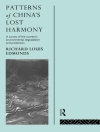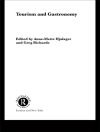If they are to survive, cities need healthy chunks of the world’s ecosystems to persist; yet cities, like parasites, grow and prosper by local destruction of these very ecosystems. In this absorbing and wide-ranging book, Eldredge and Horenstein use New York City as a microcosm to explore both the positive and the negative sides of the relationship between cities, the environment, and the future of global biodiversity. They illuminate the mass of contradictions that cities present in embodying the best and the worst of human existence. The authors demonstrate that, though cities have voracious appetites for resources such as food and water, they also represent the last hope for conserving healthy remnants of the world’s ecosystems and species. With their concentration of human beings, cities bring together centers of learning, research, government, finance, and media—institutions that increasingly play active roles in solving environmental problems.
Some of the topics covered in
Concrete Jungle:
–The geological history of the New York region, including remnant glacial features visible today
–The early days of urbanization on Manhattan Island, focusing on the history of Central Park, Collect Pond, and Manhattan Square
–The history of early railway lines and the development of New York’s iconic subway system
–The problem of producing enough safe drinking water for an ever-expanding population
–Prominent civic institutions, including universities, museums, and zoos
Inhaltsverzeichnis
Preface: The Yin and Yang of Cities
1. Regarding Broadway: The Urban Saga and the New York Microcosm
2. Forest Primeval
Building Stones
3. Landscape Transformed
Around the American Museum of Natural History
East River Shoreline
4. Growth of the Concrete Jungle
One Hundred and Fifty-Fifth Street
Queensboro Bridge and East River
5. Fouling, and Cleaning, the Nest
The High Bridge
6. Invasion and Survival
John Torrey
Fort Tryon Park
The Battery
The Sea Wall
7. Resilience, Restoration, and Redemption
Canyonlands and the Future
8. Cities, Globalization, and the Future of Biodiversity
Notes, References, and Suggestions for Further Reading
List of Illustrations
Acknowledgments
Index
Über den Autor
Niles Eldredge is Curator Emeritus at the American Museum of Natural History and codeveloper with Stephen Jay Gould of the theory of punctuated equilibria in evolutionary biology. Among his many books are Life in the Balance and Dominion (UC Press).Sidney Horenstein is a geologist and Environmental Educator Emeritus with the American Museum of Natural History and the natural history consultant to the Bronx County Historical Society. He has written extensively about New York City geology.












